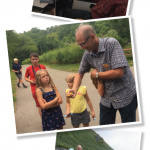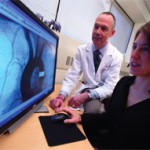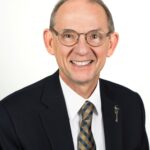In preparing for the second year of his term leading the Rheumatology Research Foundation, Eric Matteson, MD, MPH, has developed an ambitious set of goals for the year ahead, and he says the strong professional and personal inspiration he gets from serving in various volunteer roles within the College is what helps drive him to achieve these objectives.
“I have lots of goals because we have lots of challenges, as well as lots of opportunities in our practice and in the inspired work of the ACR,” Dr. Matteson says. “It’s a very exciting time in the field of rheumatology.”
The ultimate driver behind Dr. Matteson’s work with the ACR for the past 20 years is encapsulated in the Foundation’s mission to advance research and training to improve the health of people with rheumatic diseases.
“The ACR is a very creative and dynamic organization because of the people in it,” he acknowledges. “When we can bring together our different areas of expertise—whether it is in research, education or clinical care—we have the power to truly make a positive difference in the lives of our patients.”
Exciting Work on the Horizon
Building off the work he and the Foundation achieved last year, Dr. Matteson has set forth the following goals for 2017:
- Finish the Journey to Cure campaign.
- Launch a new campaign with the goal of raising $75 million over the next five years to create supportive resources for research and training.
- Work toward the goals of the Foundation’s strategic plan finalized this past year to achieve these three aims:
- Improve patient access to care by supporting research training;
- Demonstrate the value of care of patients with rheumatic disease; and
- Establish new relationships with industry partners, insurers, employers and members to advance the mission of the Foundation.
In addition, Dr. Matteson serves on the ACR Executive Committee. Through his work with this committee, and through his overall support of the ACR and ARHP, he hopes to:
- Enhance workforce development by training rheumatology care providers, such as physician assistants and advanced practice nurses;
- Ensure efficacy efforts to provide the highest level of care to support the highest quality of life for patients; and
- Promote the work of the ACR’s RISE Registry to collect and share patient outcomes data that can be leveraged to further advance care.
The Power of Participation
Dr. Matteson encourages every member of the ACR to realize what the College can offer as a strong and dynamic organization that continuously strives to improve the care of patients with rheumatic diseases.
“We are the premier organization in rheumatology care and the best organization to accomplish these goals,” he says, adding that it is personally gratifying and professionally fulfilling to be a part of a dynamic organization with a shared mission to advance the care of all patients with rheumatic diseases.
Inspired Leadership
When Dr. Matteson is not advancing the missions of the ACR and the Rheumatology Research Foundation, he is serving in his various professional roles at the Mayo Clinic in Rochester, Minn. He is a professor of medicine, leads epidemiological and clinical trial research, serves as the director of safety for the clinical studies program within his clinic, and of course, he also sees patients—the most “important and fun part” of his workday.
In his personal life, Dr. Matteson and his wife are avid bird watchers and spend their free time traveling to bird watch and enjoy the different cultures they visit. With a degree in ornithology, he also enjoys studying the ecology and biology of different bird species.
Carina Stanton is a freelance science journalist based in Denver.



